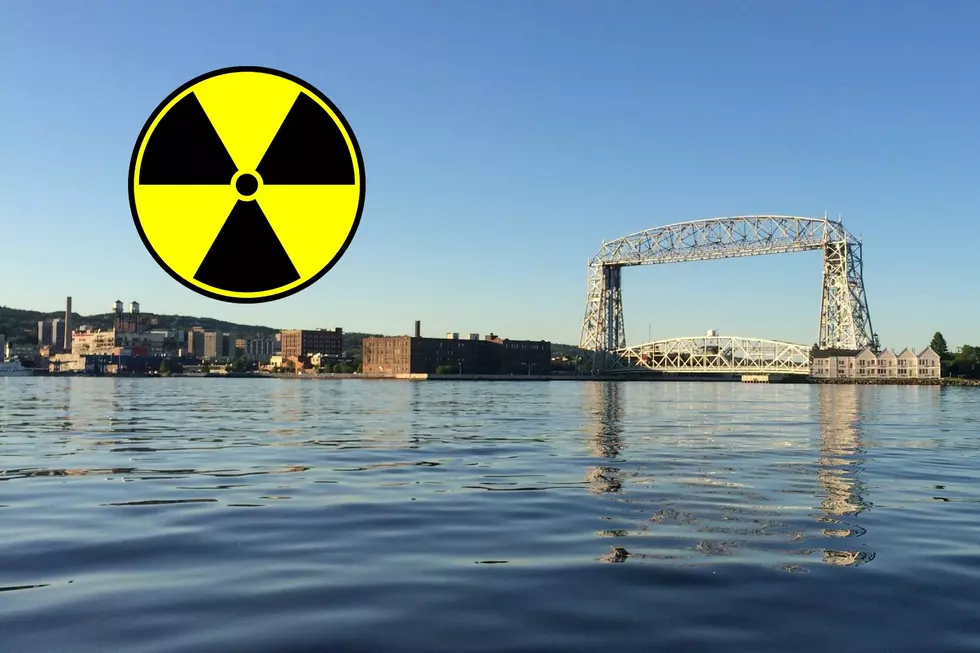
What Would The Nuclear Blast Radius Look Like If Duluth Was Hit?
I'm going to start off this by saying it is extremely unlikely that Duluth would be targeted with a nuclear warhead from an enemy at this time. But, with the Russia-Ukraine war ongoing, and Vladimir Putin continuously trying to show power by reminding the west that nuclear weapons are at his disposal, the thought does cross your mind. We enjoyed a couple of decades of nuclear de-escalation, but now we find ourselves back in the Cold War we had hoped was over for good.
The United States Military and Intelligence agencies still don't believe Putin will use a nuke, and if he did it would likely be a smaller tactical nuclear weapon in Ukraine. That aggression would be met with severe consequences from NATO. It's not hard to see how this could escalate quickly into a nuclear doomsday scenario. We aren't there yet, but the threat of it should be enough to scare both sides into not using their nuclear arsenal. The mutual threat of destruction is what has prevented countries from using their nukes since Japan was bombed by the United States in World War II.
Duluth would not be one of the first places targeted. The goal of any adversary with nuclear weapon technology would be to take out our nuclear missile sights and strategic military targets. Secondly, larger cities with larger populations such as New York, Washington, DC, Los Angeles, and other major cities would be a more desirable target.
Still, with the 148th Fighter Wing being in town, and the fact that Duluth is a major shipping harbor for the entire Midwest and beyond it's not out of the question that it could be a valuable target to take out for the enemy. If the harbor sustained serious damage, it would cripple the entire U.S. Steel Industry.
Let's look at a few different scenarios with a nuclear blast simulator from nuclearsecrecy.com.
Russian Arsenal 800 Kiloton Topol SS-25 - Surface Detonation
Estimated fatalities: 33,520, Estimated Injured: 43,850
That's a big bomb, and it's currently in the Russian arsenal. There are two different types of blasts to simulate. One is an airburst which is when the warhead detonates in the air above a city. The other is a surface blast. For the first one, the surface blast shown would have a fireball of 1.15 kilometers. For this model, ground zero is in Lincoln Park, just below Enger Golf Course. The fireball would reach from 27th Avenue West almost to Mesaba Avenue, including Enger Golf Course all the way to the waterfront. Everything would be vaporized in this bright yellow circle.
The heavy blast damage radius would be 2.02 kilometers. It would stretch from Lake Superior College to Amsoil Arena Heavy blast damage is rated at 20 psi and would severely damage or destroy concrete buildings. Fatalities for this area are also near 100%.
Moderate blast damage radius is the area where most residential buildings would collapse. There would be many fatalities in this area along with fires forming among the debris. This radius is 4.25 miles, reaching all the way from Hermantown to Spirit valley, and from Duluth Heights to almost Superior. It would go east as far as St. Luke's Hospital.
The next ring outwards is the thermal radiation radius. That would extend to 9.7 miles from the blast and would cause 3rd degree burns on anyone exposed. That would hit all of Duluth, most of Superior, Proctor, and Hermantown.
Finally, the light blast radius is where the blast would still cause windows to break.

North Korea Weapon - 150 kilotons
Estimated fatalities: 11,570 Estimated Injuries: 25,690
North Korea's 2017 nuclear test is estimated to have had a yield of 150 kilotons. The county continues to work on its intercontinental ballistic missiles in hopes of being able to threaten the United States. Here's what it would look like if a 150-kiloton warhead hit Duluth.
The fireball would be .59 kilometers. The heavy blast damage radius would be 1.16 kilometers. The radiation radius would be nearly 2 kilometers. The moderate blast damage area would be 2.4 kilometers. Basically, any home from Piedmont Avenue to Wade Stadium to Canal Park would be destroyed. Windows on homes would break as far away as North End Superior, Lakeside, and Spirit Valley.
"Little Boy" - The bomb dropped on Hiroshima
Estimated fatalities: 5,490 Estimated injuries 15,120
If the same yield weapon that was dropped on Hiroshima was dropped on Duluth, this is what the blast radius would look like. It was a 15-kiloton bomb detonated as an airburst at around 2,000 feet. That was so it would have maximum blast damage while also creating less fallout as they planned and did have troops on the ground following the blast.
The fireball radius would only be 180 meters. The heavy blast damage would be .36kms. Moderate blast damage would be 1.67 km, and light blast damage would be 4.52 km.
The biggest bomb ever tested: USSR's "Tsar Bomba" 50 Megatons
Estimated fatalities: 149,430 Estimated injuries: 29,030
The Soviet Union tested the Tsar Bomba in 1961. They've designed even a bigger one, but never tested it. This would be if the one actually tested was detonated above Duluth. As you could see it would take out the entire region. 3rd-degree burns would happen as far away as Iron River, Wisconsin, Moose Lake, Cotton, Solong Springs, Two Harbors, and anything in between.
Russians released footage of this test. It is frighteningly awesome footage.
You can use the Nukemap simulator online and change whatever variables you wish to see the outcome.
10 Major Winter Weather Events In Northland History
LOOK: See how much gasoline cost the year you started driving
More From KOOL 101.7









